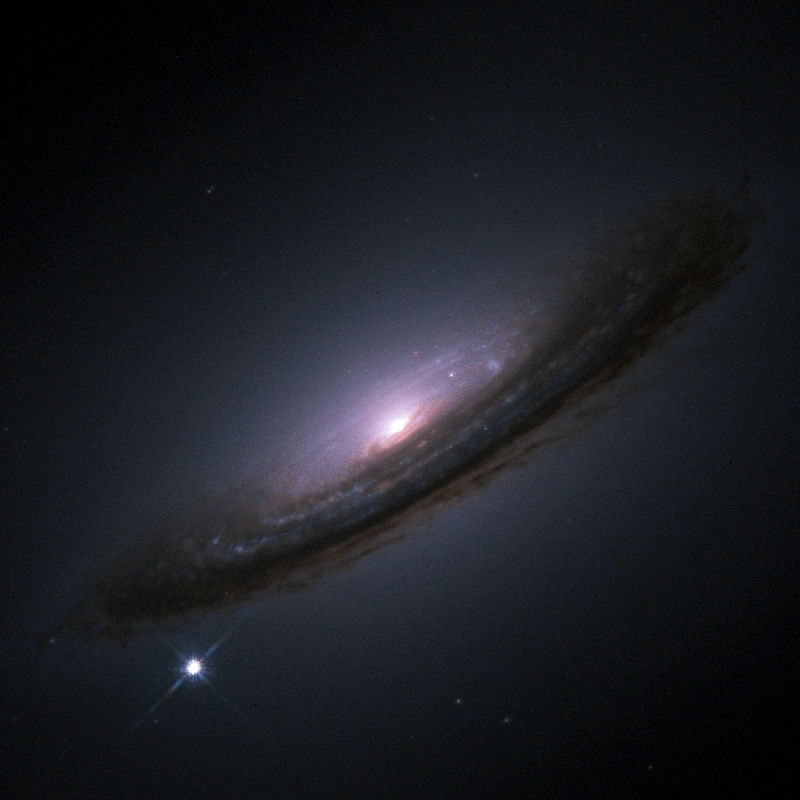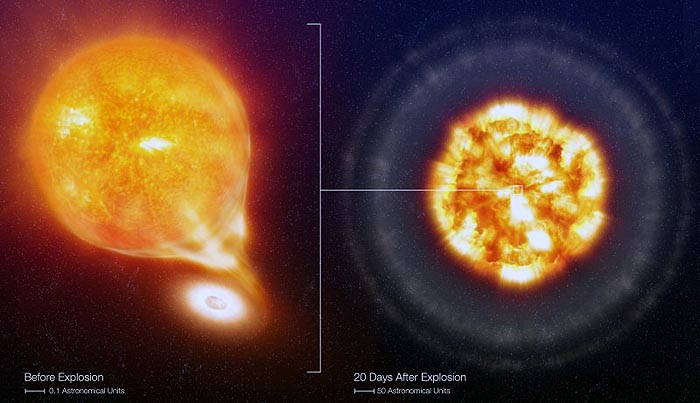Thermal Runaway Supernovae
The majority of stars have a companion and form a so-called binary system. Each of these companions will have the same age like twins, and it is likely that they will reach their final stage at about the same time. Therefore a white dwarf quite often has a companion star that is still in the red giant phase.
 Image of SN 1994D, a type Ia supernova,
Image of SN 1994D, a type Ia supernova,
outshining its home galaxy NGC 4526. Source
Then material can be accreted by the white dwarf from its companion due to its very strong gravity, causing an increase in mass. If enough mass is accreted to bring the total mass over the Chandrasekhar limit, the equilibrium in the white dwarf is lost and the white dwarf will collapse to a neutron star. The modern view is that the supernova already occurs before this core collapse, as it is triggered by a sudden run-away fusion of carbon of which the white dwarf has plenty.
These type IA supernovae have a characteristic light curve (luminosity as a function of time). Especially the peak luminosity is very consistent for this class of supernovae. This makes them very important for measuring distance. Measuring the apparent brightness (as we observe it) and comparing that with the actual luminosity that we know for this type of supernova, can lead to accurate calculation of the distance to their host galaxy.
(More about this in our EBook “Stellar Distance”).
 |
|
| Artist's impression of Type IA Supernova SN2006X | |
| Left: The White Dwarf (bottom right) accretes material from the Red Giant star, through a so-called accretion disk which surrounds the compact star. The Red Giant star has a radius about 100 times larger than our Sun, while the White Dwarf is about 100 times smaller than the Sun. | Right: Once the mass of the White Dwarf has reached the Chandrasekhar limit, the core collapses and a shock wave completely disrupts the star, ejecting its material into space with velocities up to a tenth of the speed of light. Twenty days after the explosion, when the supernova reaches its maximum brightness, the ejected material has reached a size of roughly 450 times the distance from Earth to the Sun. The enormous amount of light emitted by the supernova reveals gas shells which were ejected by the Red Giant in the last few hundred years before the explosion. |
| Credit: ESO, European Organisation for Astronomical Research in the Southern Hemisphere. | |

